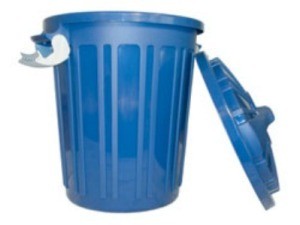 Composting is an easy, economical way to keep nutrient-rich plant food at the ready. Not only is it good for your plants, if you pay by the can for waste removal, it can also be good for your garbage bill! Here is an inexpensive way to get started.
Composting is an easy, economical way to keep nutrient-rich plant food at the ready. Not only is it good for your plants, if you pay by the can for waste removal, it can also be good for your garbage bill! Here is an inexpensive way to get started.
Layer 2: Next add some chopped leaves, junk mail, shredded cardboard, or a few sheets of newspaper. These materials are rich in carbon and referred to as browns. Other examples of browns include straw, woodchips or saw dust.
Layer 3: Your next layer should contain nitrogen-rich materials, also called greens. Greens include grass clippings, pet hair, dust bunnies, vegetable and fruit peelings, coffee grounds, and other non-fatty kitchen scraps including eggshells. If you are composting with worms, avoid onions and keep citrus peelings to a minimum (worms don't care for them). Avoid meat scraps and fatty foods like salad dressings and dairy products. They emit a strong odor when decomposing which attracts animals. Finish with another couple of handfuls of garden dirt and a few sprinkles from a watering can. Close the lid and you are all set!If you don't have enough materials to create all three layers right away, don't worry. Just keep adding waste as you generate it. Each time you add a layer of green, cover it with some browns and a few more handfuls of garden dirt.
Here are the questions asked by community members. Read on to see the answers provided by the ThriftyFun community.
I would like to start a compost tumbler. I think the trash can seems to be the one that is not to hard to do. But how long does it take for it to be usable? Can I keep adding to it?
By vonda from SC
ThriftyFun is one of the longest running frugal living communities on the Internet. These are archives of older discussions.
I was wondering how to make a compost bin out of a trash can.
I want to make a small manageable compost bin. I was wondering if I could just use a large plastic garbage can?